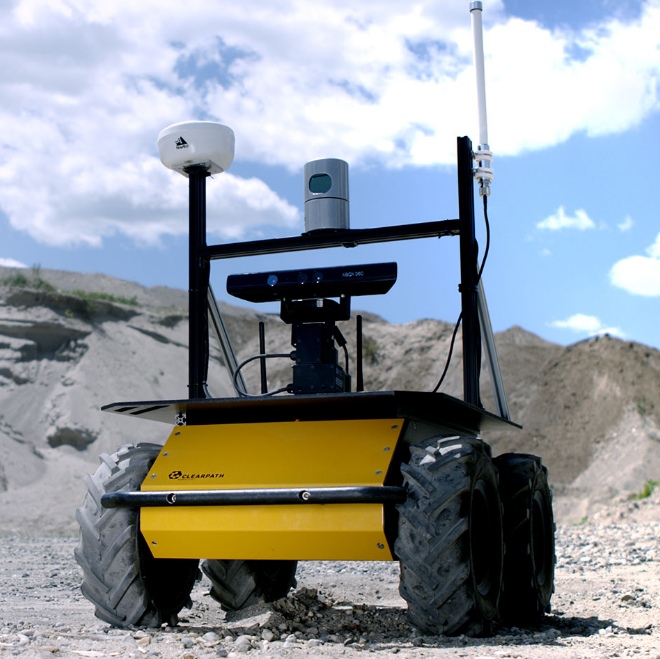laserReceived 中的实现
以下内容在 if(lasers_update_[laser_index]) 的括号内1
2
3
4
5
6
7
8
9
10
11
12
13
14
15
16
17
18
19
20
21
22
23
24
25
26
27
28// 粒子重采样
if(!(++resample_count_ % resample_interval_))
{
pf_update_resample(pf_);
resampled = true;
}
pf_sample_set_t* set = pf_->sets + pf_->current_set;
ROS_DEBUG("Num samples: %d\n", set->sample_count);
// 发布话题particlecloud, 发布的是最终结果cloud,在机器人移动后执行
if (!m_force_update) //在运动模型那里赋值false
{
geometry_msgs::PoseArray cloud_msg;
cloud_msg.header.stamp = ros::Time::now();
cloud_msg.header.frame_id = global_frame_id_;
cloud_msg.poses.resize(set->sample_count);
for(int i=0;i<set->sample_count;i++) // 粒子个数
{
// tf::Pose转为geometry_msgs::Pose,就是用于后面发布消息
tf::poseTFToMsg(tf::Pose(tf::createQuaternionFromYaw(set->samples[i].pose.v[2]),
tf::Vector3(set->samples[i].pose.v[0],
set->samples[i].pose.v[1], 0) ),
cloud_msg.poses[i]);
}
// 构造函数中注册了话题
particlecloud_pub_.publish(cloud_msg);
}
以下内容紧接上面内容,不在if内,但还在laserReceived内1
2
3
4
5
6
7
8
9
10
11
12
13
14
15
16
17
18
19
20
21
22
23
24
25
26
27
28
29
30
31
32
33
34
35
36
37
38
39
40
41
42
43
44
45
46
47
48
49
50
51
52
53
54
55
56
57
58
59
60
61
62
63
64
65
66
67
68
69
70
71
72
73
74
75
76
77
78
79
80
81
82
83
84
85
86
87
88
89
90
91
92
93
94
95
96
97
98
99
100
101
102
103
104
105
106
107
108
109
110
111// 刚启动amcl时不执行,机器人移动后执行
if(resampled || force_publication)
{
// Read out the current hypotheses
double max_weight = 0.0;
int max_weight_hyp = -1;
std::vector<amcl_hyp_t> hyps;
hyps.resize(pf_->sets[pf_->current_set].cluster_count);
for(int hyp_count = 0; hyp_count < pf_->sets[pf_->current_set].cluster_count; hyp_count++)
{
double weight;
pf_vector_t pose_mean;
pf_matrix_t pose_cov;
if (!pf_get_cluster_stats(pf_, hyp_count, &weight, &pose_mean, &pose_cov))
{
ROS_ERROR("Couldn't get stats on cluster %d", hyp_count);
break;
}
hyps[hyp_count].weight = weight;
hyps[hyp_count].pf_pose_mean = pose_mean;
hyps[hyp_count].pf_pose_cov = pose_cov;
if(hyps[hyp_count].weight > max_weight)
{
max_weight = hyps[hyp_count].weight;
max_weight_hyp = hyp_count;
}
}
if(max_weight > 0.0)
{
ROS_DEBUG("Max weight pose: %.3f %.3f %.3f",
hyps[max_weight_hyp].pf_pose_mean.v[0],
hyps[max_weight_hyp].pf_pose_mean.v[1],
hyps[max_weight_hyp].pf_pose_mean.v[2] );
geometry_msgs::PoseWithCovarianceStamped p;
// Fill in the header
p.header.frame_id = global_frame_id_;
p.header.stamp = laser_scan->header.stamp;
// Copy in the pose
p.pose.pose.position.x = hyps[max_weight_hyp].pf_pose_mean.v[0];
p.pose.pose.position.y = hyps[max_weight_hyp].pf_pose_mean.v[1];
tf::quaternionTFToMsg(tf::createQuaternionFromYaw(hyps[max_weight_hyp].pf_pose_mean.v[2]),
p.pose.pose.orientation);
// Copy in the covariance, converting from 3-D to 6-D
pf_sample_set_t* set = pf_->sets + pf_->current_set;
for(int i=0; i<2; i++)
{
for(int j=0; j<2; j++)
{
// Report the overall filter covariance, rather than the
// covariance for the highest-weight cluster
//p.covariance[6*i+j] = hyps[max_weight_hyp].pf_pose_cov.m[i][j];
p.pose.covariance[6*i+j] = set->cov.m[i][j];
}
}
// Report the overall filter covariance, rather than the
// covariance for the highest-weight cluster
//p.covariance[6*5+5] = hyps[max_weight_hyp].pf_pose_cov.m[2][2];
p.pose.covariance[6*5+5] = set->cov.m[2][2];
pose_pub_.publish(p);
last_published_pose = p;
ROS_DEBUG("New pose: %6.3f %6.3f %6.3f",
hyps[max_weight_hyp].pf_pose_mean.v[0],
hyps[max_weight_hyp].pf_pose_mean.v[1],
hyps[max_weight_hyp].pf_pose_mean.v[2]);
// subtracting base to odom from map to base and send map to odom instead
tf::Stamped<tf::Pose> odom_to_map;
try
{
tf::Transform tmp_tf(tf::createQuaternionFromYaw(hyps[max_weight_hyp].pf_pose_mean.v[2]),
tf::Vector3(hyps[max_weight_hyp].pf_pose_mean.v[0],
hyps[max_weight_hyp].pf_pose_mean.v[1],
0.0));
tf::Stamped<tf::Pose> tmp_tf_stamped (tmp_tf.inverse(),
laser_scan->header.stamp,
base_frame_id_);
this->tf_->transformPose(odom_frame_id_,
tmp_tf_stamped,
odom_to_map);
}
catch(tf::TransformException)
{
ROS_DEBUG("Failed to subtract base to odom transform");
return;
}
latest_tf_ = tf::Transform(tf::Quaternion(odom_to_map.getRotation()),
tf::Point(odom_to_map.getOrigin()));
latest_tf_valid_ = true;
if (tf_broadcast_ == true)
{
// We want to send a transform that is good up until a
// tolerance time so that odom can be used
ros::Time transform_expiration = (laser_scan->header.stamp +
transform_tolerance_);
tf::StampedTransform tmp_tf_stamped(latest_tf_.inverse(),
transform_expiration,
global_frame_id_, odom_frame_id_);
this->tfb_->sendTransform(tmp_tf_stamped);
sent_first_transform_ = true;
}
}
else
{
ROS_ERROR("No pose!");
}
}laserReceived到这里只剩一个else if(latest_tf_valid_)了
pf_update_resample
1 | // Resample 粒子分布 |
如果w_diff在某次计算的比较大,那么就容易注入随机粒子,比如:1
2
3
4
5w_diff >0: 0.032770
random pose num: 160
w_diff >0: 0.040729
random pose num: 214
最后收敛后,set_b中的粒子都来自set_a,有些对应set_a中的相同的粒子;有些粒子对应set_a中权重相同的,但不是同一个的粒子
